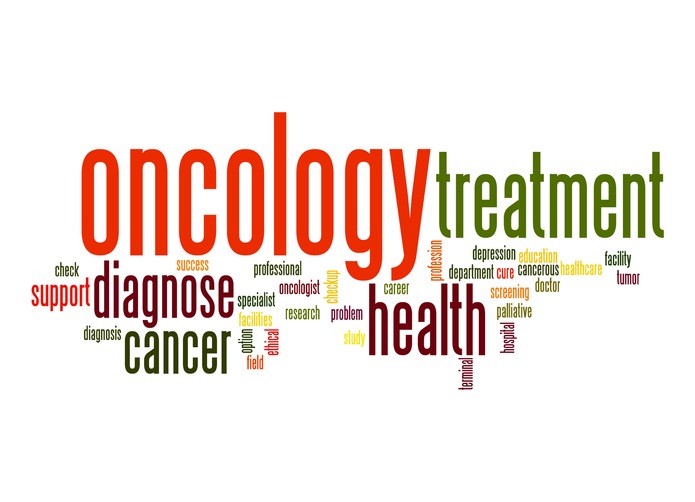
Each week on DocWire News, editors bring you the latest in oncology news and cancer research. In case you missed it, here are this week’s top headlines:
- Rates of Early-Onset CRC Rising in White Adults under 50
- Study Assesses Geriatric Consultation in Older Patients with Blood Cancer
- Most Women Face 6 to 22 Percent Risk of Breast Cancer Metastases
- Higher Serum Iron May Up Liver Cancer Risk in NAFLD Patients
Keep reading for the breakdown on these top stories.
RELATED: Last Week’s Round-Up: Environmental Causes of MDS
Rates of Early-Onset CRC Rising in White Adults under 50
Incidence rates of early-onset colorectal cancer (CRC) are similar among Black and White individuals aged 40 to 49 years, though cases have increased over time among White adults, according to an analysis of data from the SEER 18 database. The authors noted that trends in incidence rates over time may be related to the adoption of CRC screening guidelines.
Additionally, the researchers noted a reduced incidence of rectal cancer in Black individuals compared with White counterparts, as well as increasing differences in rates of rectal cancer between Black and White women.
https://www.docwirenews.com/hematology-oncology/rates-of-early-onset-crc-rising-in-white-adults-under-50/
–
Study Assesses Geriatric Consultation in Older Patients with Blood Cancer
In a randomized trial of 160 older patients with blood cancer, geriatric consultation did not show significantly improved survival or reduced hospitalization compared with standard care. However, these consultations were highly valued among clinicians and increased the likelihood of patients discussing their care goals.
The difference in overall survival at one year was 2.9% in favor of consultation (difference =2.9%, P=0.65). Geriatric consultation was also not associated with improvements with hospitalizations. The consultation cohort did not have significantly reduced rates of emergency department visits, hospitalizations, or length of stay.
However, geriatric consultations were associated with a greater likelihood of patients discussing their EOL care goals with their clinician (odds ratio=3.12). Additionally, between 62.9% and 88.2% of clinicians rated these consultations as “useful in the management of several geriatric domains.”
https://www.docwirenews.com/hematology-oncology/study-assesses-geriatric-consultation-in-older-patients-with-blood-cancer/
–
Most Women Face 6 to 22 Percent Risk of Breast Cancer Metastases
The risk of early breast cancer spreading to another part of the body ranges from 6-22%, according to research presented at the Advanced Breast Cancer Sixth International Consensus Conference.
Women first diagnosed before 35 years of age have a 12.7-38% risk of their breast cancer coming back and spreading to other parts of the body, while women diagnosed at ≥50 years have a risk of 3.7-28.6%. Risk also varies by type of breast cancer, with women diagnosed with luminal B cancer having a risk between 4.2-35.5%, compared to a 2.3-11.8% risk seen in women diagnosed with luminal A cancer.
https://www.docwirenews.com/hematology-oncology/most-women-face-6-to-22-percent-risk-of-breast-cancer-metastases/
–
Higher Serum Iron May Up Liver Cancer Risk in NAFLD Patients
Elevated serum iron and transferrin saturation levels are significantly associated with an increased risk for developing liver cancer in patients with nonalcoholic fatty liver disease (NAFLD), according to a study presented at The Liver Meeting, the annual meeting of the American Association for the Study of Liver Diseases.
Researchers assessed the impact of iron indices on hepatocellular carcinoma (HCC) risk with NAFLD. The analysis included 47,970 patients (aged 40 to 89 years) diagnosed with NAFLD.
During an average 4.35 years of follow-up, 192 patients developed HCC. NAFLD patients who developed HCC were more likely to be older, male, White, or an ever smoker and to have a history of type 2 diabetes, hyperlipidemia, or hypertension compared with NAFLD patients without HCC. Elevated serum iron (>175 mcg/dL) was associated with more than double the risk for HCC compared with a normal range of serum iron. Similarly, there was a doubled risk for HCC among those with a higher level of transferrin saturation (>35 percent) versus those with the normal range of transferrin saturation. There were no significant associations seen for HCC risk and either total iron-binding capacity or serum ferritin levels.
https://www.docwirenews.com/docwire-pick/hem-onc-picks/higher-serum-iron-may-up-liver-cancer-risk-in-nafld-patients/
–
Want to see more oncology news?
Check out last week’s Round-Up, and be sure to keep up with the latest oncology news and cancer research here on DocWire, updated daily!







 © 2025 Mashup Media, LLC, a Formedics Property. All Rights Reserved.
© 2025 Mashup Media, LLC, a Formedics Property. All Rights Reserved.